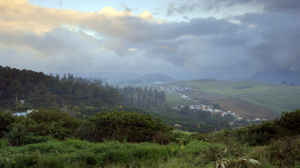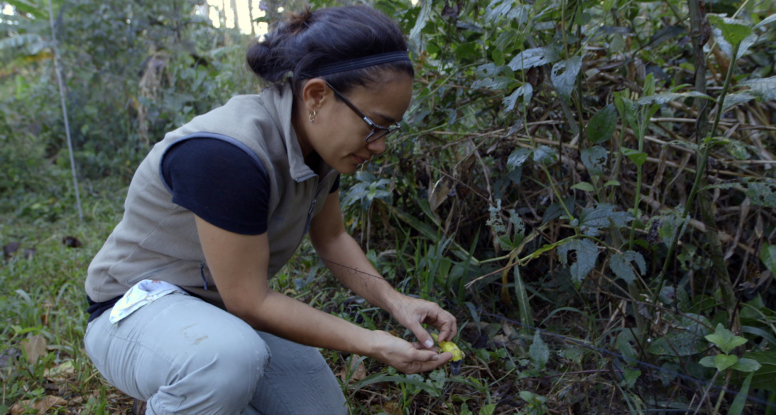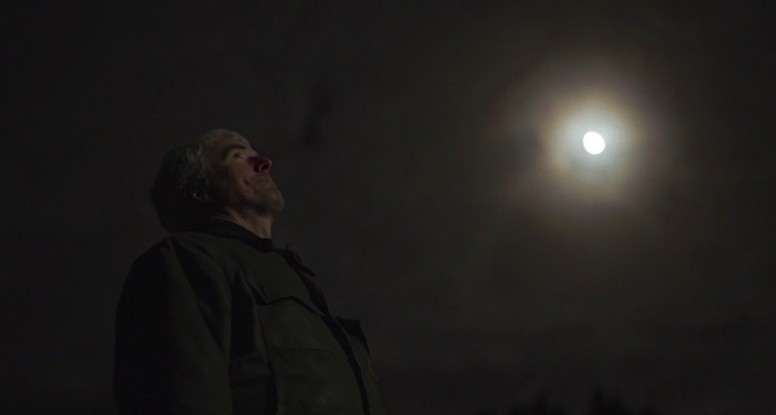Alejandra Martínez-Salinas had her first experience monitoring songbirds in mist nets in 1999. Her life changed from that moment on. In The Messenger, she says “ I fell in love with the migrant songbirds because they are so small, but also strong. They are really determined to get somewhere”. We filmed with Alejandra in Costa Rica last February.
Alejandra is an ecologist/ornithologist and a PhD candidate in the Joint Doctoral Program between the University of Idaho and CATIE, the Tropical Agricultural Research and Higher Education Center (CATIE) in Turrialba. When she was still in college in her native country of Nicarauga, Alejandra had the opportunity to assist a group of ornithologists from the Smithsonian Institute doing field work. Back then, she only learned how to set up and take down mist nets just prior to going into the field, and she didn’t have much experience releasing birds from the nets. Today, fifteen years later, Alejandra leads the Bird Monitoring Program at CATIE.
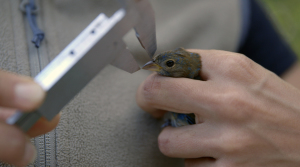
Martinez-Salinas arrived at CATIE in 2006 to pursue her master’s degree in forest management and biodiversity conservation. Soon after graduation, with Fabrice DeClerck, one of her Master’s thesis advisors and Rachelle DeClerck, an environmental educator, she began discussing the possibility of setting up a bird monitoring program that could cover different types of agricultural land uses. It was clear from the moment they set it up that a monitoring program was not going to be a small task but they decided to give it a try. Seven years later, the bird monitoring program is a huge success.
Since 2008, they have been trapping and banding birds in six different agricultural land uses within the CATIE campus. They band and release wild birds in forest, pastures divided by live fences, cacao, multistrata and simple agroforest coffee and sugar cane plantations. To date, they have banded 9,000 birds, including 56 species of neo-tropical migrants.
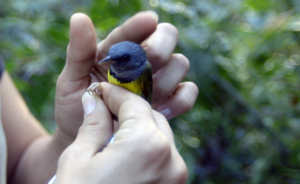
Our crew filmed a wonderful scene with Alejandra handling a Mourning Warbler, which had come back to CATIE after being banded in the same site the year before. Most common migratory songbird species visiting their mist nets are the Yellow and Chestnut-sided Warblers, Northern Waterthrush, Mourning and Tennessee Warblers, Alder Flycatcher and Swainson’s Thrush. Some of the rare or one-time visitors include Blue-winged and Golden-winged Warblers, Bay-breasted and Blackpoll Warblers.
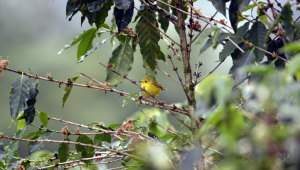
Alejandra is very concerned about how monoculture farming is affecting diversity and habitat on coffee farms. She is currently conducting experiments to prove that birds can have a significant effect on reducing harmful insects, like the crop damaging coffee berry borer. She says if they can convince the local farmers that the birds can do just as good a job as chemical pesticides, it will be really good for the birds, because more farmers will want to have more diverse crops to attract more birds to their farms, and the farmers will in turn save money on pesticides. Reducing pesticides benefits the whole ecosystem in many ways.
In the last seven years, hundreds of visitors from many different countries and backgrounds have come to visit CATIE. Each of the visitors leaves the bird banding stations knowing a little bit more about songbird conservation in agricultural lands and the importance of saving all species for a balanced ecosystem.
Watch for Alejandra on screen in The Messenger, to be released later this year.
